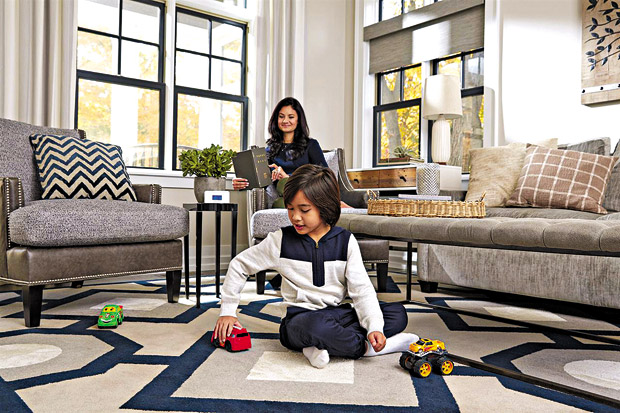This year’s weather has already brought an increase in the number of carbon monoxide (CO) incidents across the country. While this poisonous gas can impact individuals at any time of the year, 50 percent of CO poisonings occur between November and February, according to the National Fire Protection Association (NFPA).
The silent killer
A colorless and odorless gas, carbon monoxide is known as “the silent killer,” and impossible to detect without a CO alarm. Estimates from the NFPA suggest that there are more than 80,000 CO incidents per year. What’s more, CO poisoning is the number one cause of accidental poisoning in the U.S. according to the Journal of the American Medical Association.
CO poisoning can be difficult to diagnose – often until it’s too late. Symptoms mimic those of many other illnesses, including nausea, headaches, dizziness, weakness, chest pain and vomiting.
In more severe poisoning cases, people may experience disorientation or unconsciousness, or suffer long-term neurological disabilities, cardiorespirator failure or death.
Carbon monoxide comes from any fuel-burning device, such as a, boiler, stove, car, generator, or cooking sources using coal, wood, petroleum products or other fuels emitting CO as a byproduct of combustion. If attached garages with doors, ductwork or ventilation shafts are connected to a living space, they can also be potential sources for CO. This is why it’s so important to check your appliances regularly so you can see if you’re at potential risk of CO exposure. For example, you can get gas boiler repair Durham if you notice your boiler is acting up – it can potentially save your life.
Your plan of action
Home maintenance is also important to help keep your loved ones safe. This includes scheduling annual professional inspections for any fuel-burning appliances, such as the furnace, oven, fireplace and dryer.
The most critical step to ensure your home is protected is to have a CO alarm.
By providing protection against the deadly gas, CO alarms can make the difference between life and death. A survey from First Alert found that 40 percent of Americans do not own a single working CO alarm.
“Carbon monoxide alarms belong in every household,” said Tarsila Wey, director of marketing for First Alert.
The NFPA recommends installing CO alarms on every level of the home, including the basement, and within 15 feet of all sleeping areas. They can be placed high or low in the room as the deadly gas is dispersed evenly within the air.
Checking alarms regularly and following manufacturer instructions for alarms and all home equipment play an equally vital role.
All CO alarms in your home should be battery-powered or hardwired with battery backup. To help ensure your family is protected, First Alert offers a variety of alarms.
Families can choose an alarm that best suits their needs, from a tabletop alarm with a 10-year sealed battery and digital display to see detected CO levels in parts-per-million to a combination smoke and CO alarm for two-in-one protection.
Most states have laws requiring CO alarms in the home. To learn more about your local requirements, visit firstalert.com/community/legislation/.
If your CO alarm sounds, immediately go outside for fresh air and call 911.
To learn more about CO safety or other home safety tips, visit firstalert.com/carbonmonoxide/.
This article is courtesy of Brandpoint.

